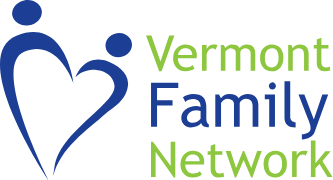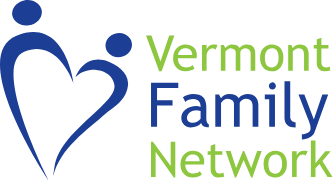About
The Vermont State Board of Education is responsible for the establishment, advancement, and evaluation of public general education policy.
The powers and duties of the Board include making regulations governing: attendance and records of attendance of all pupils, standards for student performance, adult basic education programs, approval of independent schools, disbursement of funds, and equal access for all Vermont students to a quality education.
The governing regulations are described in the Manual of Rules and Practices
Together, the State Board of Education and the Vermont Agency of Education (AOE) provide leadership, support, and oversight to ensure that the Vermont public education system enables all students to be successful.
AOE vision: Every learner completes his or her public education with the knowledge and skills necessary for success in college, continuing education, careers, and citizenship. The public education system provides flexible learning environments rich with 21st-century tools that promote self-development, academic achievement, and active engagement in learning. It operates within a framework of high expectations for every learner with support from educators, families and the community.
Bullying and Harassment
Bullying and harassment behaviors present challenges for everyone: school faculty and staff, students, parents/guardians, and the communities we live in. Sometimes behaviors can take place in other places such as cyberbullying and overflow on to school grounds. Regardless of where the behavior started or who started the conflict, it is behavior that no one wants to have as a “norm” in our schools. Thus, addressing incidents of bullying and harassment proactively and/or reactively, immediately and effectively, is crucial in transforming these kinds of behaviors into more positive behaviors in our schools.
Education is Key
- Teaching students about the differences between bullying and harassment, teasing and taunting, flirting and hurting, or debating and denigrating.
- Empowering students to stand up to bullying and harassment, either as a target or as a bystander.
- Providing school faculty and staff with information and skills with which to address bullying and harassment, whether intervening in a “teachable moment,” or investigating a complaint of harassment.
- Engaging parents/guardians in conversations and providing information about bullying and harassment as well as about school policies and procedures related to bullying and harassment.
All of these strategies, in conjunction with other strategies to create safe schools, are the most effective ways to create positive changes in our schools. Included on PACER’s National Bullying Prevention Center is information for students, parents/guardians, and school faculty and staff. We provide an information packet on Bullying and Harassment.
Vermont’s Safe Schools Bill
Vermont’s legislature passed Act 113, the “Safe Schools Bill”, in 2000 to address the importance of providing safe and healthy learning environments for all Vermont students. The Secretary of Education established the Harassment, Hazing & Bullying Advisory Council to provide advice and recommendations on harassment, hazing, and bullying prevention strategies and resources, and to coordinate statewide activities related to the prevention of and response to harassment, hazing, and bullying.
There are many resources available to learn more about bullying and harassment, including a chart that outlines the continuum of behaviors in bullying and harassment from the Vermont Human Rights Commission. You may request an Independent Review of a Harassment Complaint. Also available is information on how to file a complaint.
Section 504
Section 504 of the Rehabilitation Act of 1973 is a civil rights law designed to eliminate discrimination on the basis of disability in any program or activity receiving Federal financial assistance. Section 504 guarantees certain rights to individuals with disabilities, including the right to full participation and access to a free and appropriate public education (FAPE) to all children regardless of the nature or severity of the disability. Specifically, 34 C.F.R.§104 states: “No otherwise qualified individual with a disability in the United States…shall, solely by reason of her or his disability, be excluded from participation in, be denied the benefits of, or be subjected to discrimination under any program or activity receiving Federal financial assistance.”
Section 504 requires the provision of appropriate educational services; services that are designed to meet the individual needs of qualified students to the same extent that the needs of students without a disability are met. Essentially Section 504 was designed to “level the playing field,” to ensure full participation by individuals with disabilities.
Juvenile Justice
Youth with Disabilities
Youth with disabilities are at a higher risk for involvement in the juvenile justice system. There is an increasing number of youth referred to court for behaviors that should be addressed through an Individual Education Program (IEP), 504 plan, educational support team (EST) plan or behavior plan. Many youth have not had the necessary evaluations to identify disabilities and may lack the proper interventions and therapies to effectively support them.
Families have the potential to be the greatest source of positive change and support for youth with disabilities involved in the juvenile justice system. If your youth is struggling and you know or suspect that they have a disability, we want to help. We can:
- Help youth with disabilities and their families become better informed about their legal rights and options for the education, treatment, and rehabilitation of youthful offenders.
- Inform parents and professionals on the correctional education in juvenile justice facilities.
- Inform parents about the services that youth receive in special education as defined in Vermont Special Education Rules and transition services while incarcerated.
- Connect with Vermont Community Justice Network to consider restorative justice if your youth is involved with the criminal justice system. It emphasizes that crime damages people, communities, and relationships. If crime is about harm, then restorative justice is about repairing the harm.
Education for Youth in Corrections
The Community High School of Vermont is a fully accredited high school through the New England Association of Schools and Colleges (NEASC) and primarily serves students who:
- Have not obtained a high school diploma and are under the custody of the Department of Corrections (DOC).
- Have a high need in the area of employment, as identified by DOC classification procedures.
- Under Vermont state law, all individuals under the age of 23, under custody of the DOC, and without high school diplomas, have a mandatory education requirement. These students are enrolled upon admission.
Multi-Tiered System of Supports (MTSS)
The Vermont multi-tiered system of supports (MTSS) is a framework that unifies educational opportunities and supports to improve outcomes and ensure equity for all students.
MTSS focuses on successful outcomes for all students by:

- Supporting all adults to meet the academic, behavioral, social and emotional needs of students
- Providing a layered continuum of high-quality, evidence-based instruction, intervention and assessment practices that are matched to students’ strengths and needs
- Relying on effective and timely use of meaningful data
- Helping schools and districts organize resources to accelerate the learning of every student
- Engaging and developing the collective expertise of educators, students, families and community partnerships
In 2015 Vermont‘s Title 16 (16 V.S.A. § 2902) replaced the term “Education Support System” with “Tiered System of Support.” The Multi-tiered System of Support provides a framework that includes an educational support team, instructional and behavioral interventions, and accommodations that are available as needed for any student who requires support beyond what can be provided in the general education classroom, and may include intensive, individualized interventions for any student requiring a higher level of support.
How can families be involved?
- Maintain positive home-school relationships
- Communicate and collaborate with your school regularly on your child’s progress in the curriculum
- Learn and understand the MTSS model and how it impacts your child
- Participate in goal setting, intervention development, monitoring of progress, and evaluation of your child
- Provide input which is critically important to integrate into each tier of intervention

